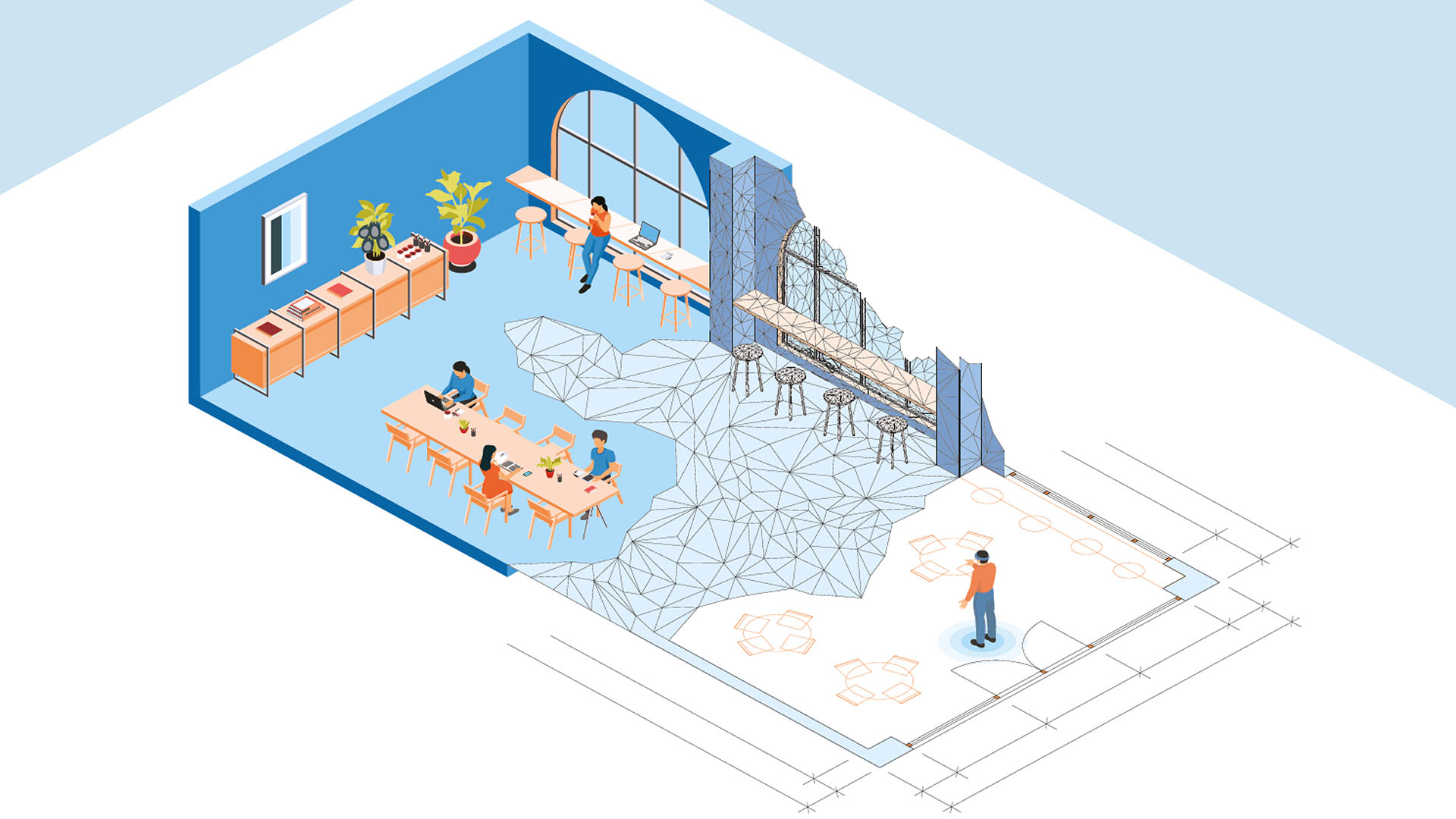
Indoor positioning using augmented reality
Unlike outdoor environments, there is no wide-spread solution to positioning inside a building. Augmented reality (AR) is recently explored for its use in indoor positioning by using Simultaneously Localisation and Mapping (SLAM) algorithms which scan the environment to find a position inside. Still, two problems remain in this context: the unaligned reference frame with the “known world” and a drift, a growing error over time. This research tries to solve these problems using shape registration. The SLAM output can be aligned to a reference floor plan, by use of a spatial matching technique. This alignment is a continuous process to account for the drift errors of the SLAM algorithm. Three spatial matching techniques are compared on their accuracy, computation time and robustness, whereas the Hough Transformation algorithm performs best. However, artefacts such as furniture or people can cause substantial errors which implies that further research is needed to create more robust methods including optimised outlier detection.
More information
- Master thesis 'Indoor positioning using augmented reality'